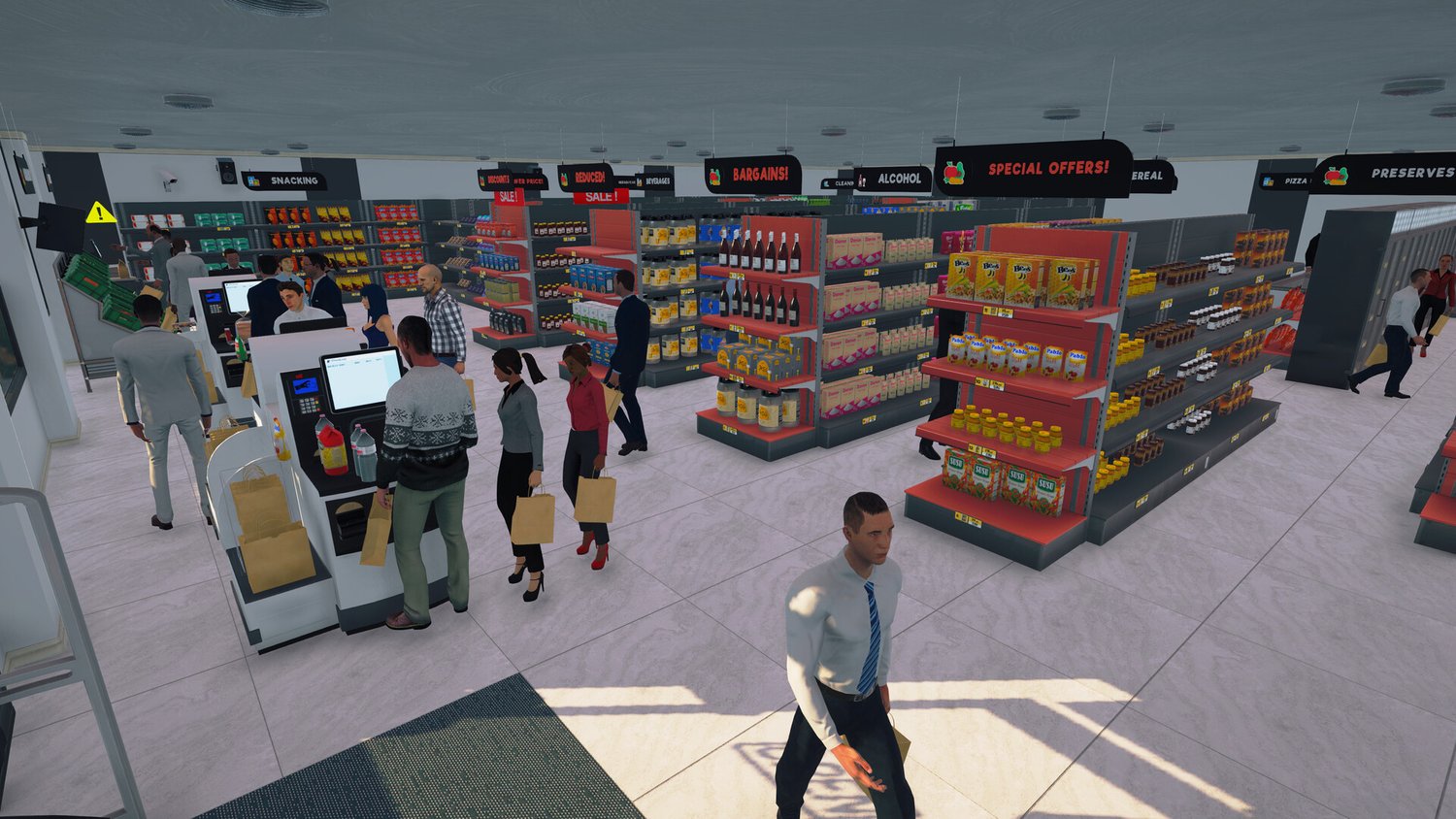Earning consistent profits in Supermarket Simulator can be challenging due to factors like slow restocking, rising operational costs, and narrow profit margins. This guide provides actionable strategies to boost your income while avoiding common mistakes that hinder progress.
Optimize Inventory Management
- Focus on High-Demand Products: Allocate shelf and storage space to fast-sellers like toilet paper, potatoes, chicken, and cleaning supplies.
- Maintain Stock Levels: Keep at least 4 boxes of top-selling items in storage. Limit slow-movers like candy or cake mix to 1-2 boxes.
Restocking Strategies
- Order 4 boxes for out-of-stock items and 2 boxes when stock drops below 5.
- Restock only after shelves are empty to avoid over-purchasing and wasted funds.
Overcoming Restocking Limits
- Even with 6 fully upgraded restockers, delays are inevitable. Prioritize high-margin items first and handle low-priority products manually.
Staffing Priorities
- Stockers Over Cashiers: Customers wait to pay but won’t buy empty shelves. Invest in stockers first, and boost one fully before hiring additional staff.
- Self-Checkout Benefits: The SCO machine pays for itself within ~10 days and eliminates the need for a second cashier. Temporary breakdowns are quick to fix manually.
Price Optimization
- +17¢ Pricing Rule: Increase item prices 17 cents above market rate for steady profits with minimal customer complaints. Larger markups deter buyers, while smaller cuts erode margins.
- Sales Are Overrated: Promotions rarely boost foot traffic. Focus instead on expanding store size and leveling up to attract more customers.
Financial Discipline
- Delay Expansions: Store upgrades escalate in cost. Only expand when daily profits comfortably exceed operational expenses.
- Avoid Cosmetic Upgrades: Skip non-essential décor until profitability is stable. Every dollar should fund inventory or income-generating upgrades.
Overcoming Late-Game Challenges
- Premium Product Pitfalls: Higher-tier items often have lower profit margins due to fluctuating costs. Avoid stocking them until you’ve confirmed consistent demand.
- Time Management: As stores grow, restocking delays and overheads increase. Focus on fast-moving inventory and avoid clutter.
FAQ
Q: What’s the best way to deal with slow restockers?
Stock only top-selling items, boost one or two key stockers, and restock manually when possible.
Q: Do price boosts really work without upsetting customers?
Yes. Adding 17 cents usually over market price works reliably without major complaints.
Q: Why am I making less money even with expensive new products?
Higher-tier items cost more but do not always have better margins. Some sell worse due to price changes or random demand shifts.
Q: When should I expand my store?
Only after you can afford it without touching your stock budget. Expansion costs rise fast and eat into your profit.
Q: Are loans worth it in Supermarket Simulator?
No. Most players end up paying more in interest and falling behind on daily bills.
Q: Does customizing the store help profit?
No. Paint, flooring, and decorations are cosmetic only and do not improve customer count or sales.

